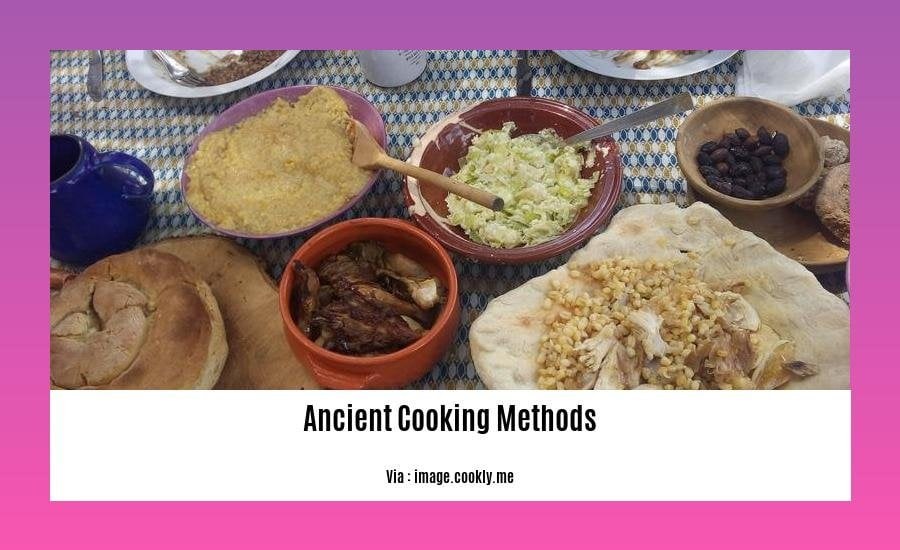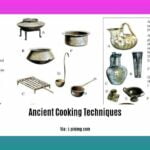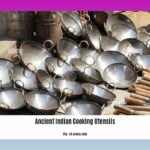Step into the culinary time machine with [- Ancient Cooking Methods: A Culinary Historian’s Exploration of Past Tastes and Techniques] and discover how ancient civilizations tantalized their taste buds. From the clay ovens of ancient Greece to the elaborate kitchens of ancient Rome, uncover the secrets behind mouthwatering dishes that have stood the test of time.
Key Takeaways:
- Ayurveda, the study of the science of life, influenced Indian cooking methods.
- Vegetarianism originated in India and impacted Indian cooking techniques.
- Mughal traditions influenced Indian cooking.
- Indian cooking methods vary across regions.
- Steaming was used in ancient India.
- Natural geothermal heat was used in Iceland to make rye bread.
Ancient Cooking Methods
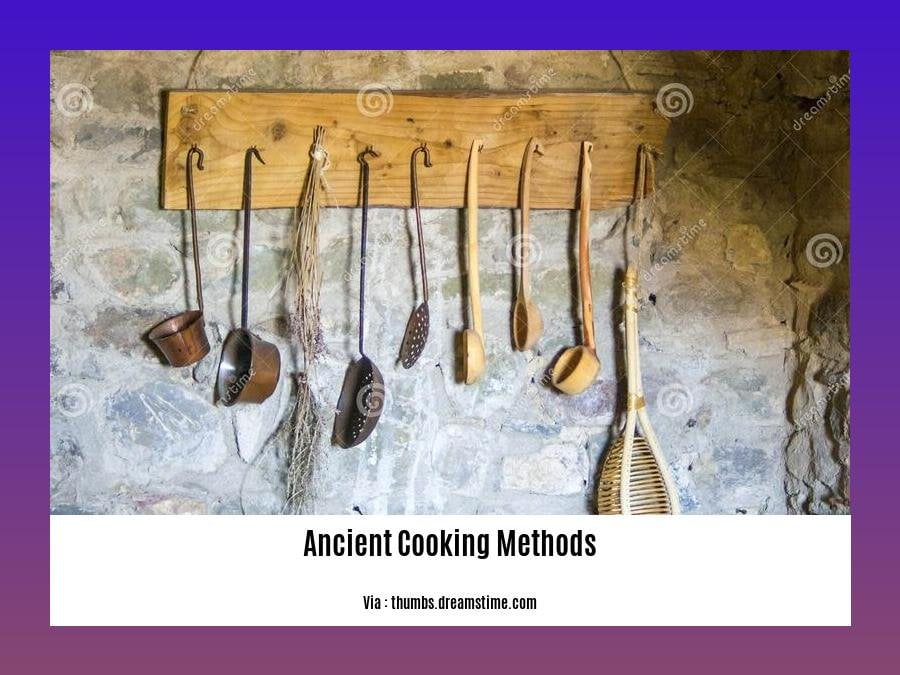
Unveiling the culinary heritage of ancient civilizations has always been my passion, leading me on a journey to explore ancient cooking methods and their profound impact on our contemporary culinary practices. As a culinary historian, I delve into historical texts, experiment with ancient recipes, and seek insights from archaeological and food studies experts to reconstruct historical dishes and analyze culinary tools.
Ancient cooking methods provide a unique glimpse into the lives and cultures of our ancestors, revealing their ingenuity and creativity in preparing meals with limited resources. Ayurveda, the ancient Indian science of life, greatly influenced Indian cooking techniques, promoting the use of spices and herbs for both culinary and medicinal purposes. Vegetarianism, originating in India, also shaped Indian cooking, leading to the development of diverse vegetarian dishes and specialized techniques.
The Mughal Empire left its mark on Indian cuisine, introducing new ingredients, cooking techniques, and culinary traditions. Regional variations in India further enriched its culinary landscape, with each region boasting distinct dishes and cooking styles.
Ancient cooking methods have transcended time and are still practiced in various parts of the world. Steaming, a technique used in ancient India, continues to be a popular method for cooking vegetables and certain types of meat. In Iceland, natural geothermal heat is harnessed to make rye bread by steaming the dough in a cauldron buried next to a hot spring.
Exploring ancient cooking methods sparks a deeper understanding of culinary heritage and culture. By unraveling the secrets of ancient recipes and techniques, we gain insights into the evolution of cuisine and its significance as a reflection of human history and cultural diversity.
Learn about the culinary culture of our ancestors with our comprehensive guide to ancient cooking techniques, covering everything from preparation to preservation.
Dive into the wonders of ancient Egypt with our captivating exploration of iconic monuments, captivating stories, and intriguing artifacts that bring the land of the pharaohs to life for Key Stage 2 students at ancient egypt for ks2.
Embark on a captivating journey through time as you explore the fascinating world of ancient Egypt during Year 3 at ancient egypt for year 3, where you’ll uncover secrets, unravel mysteries, and discover the timeless legacy of this remarkable civilization.
Ancient Roman Cooking Methods
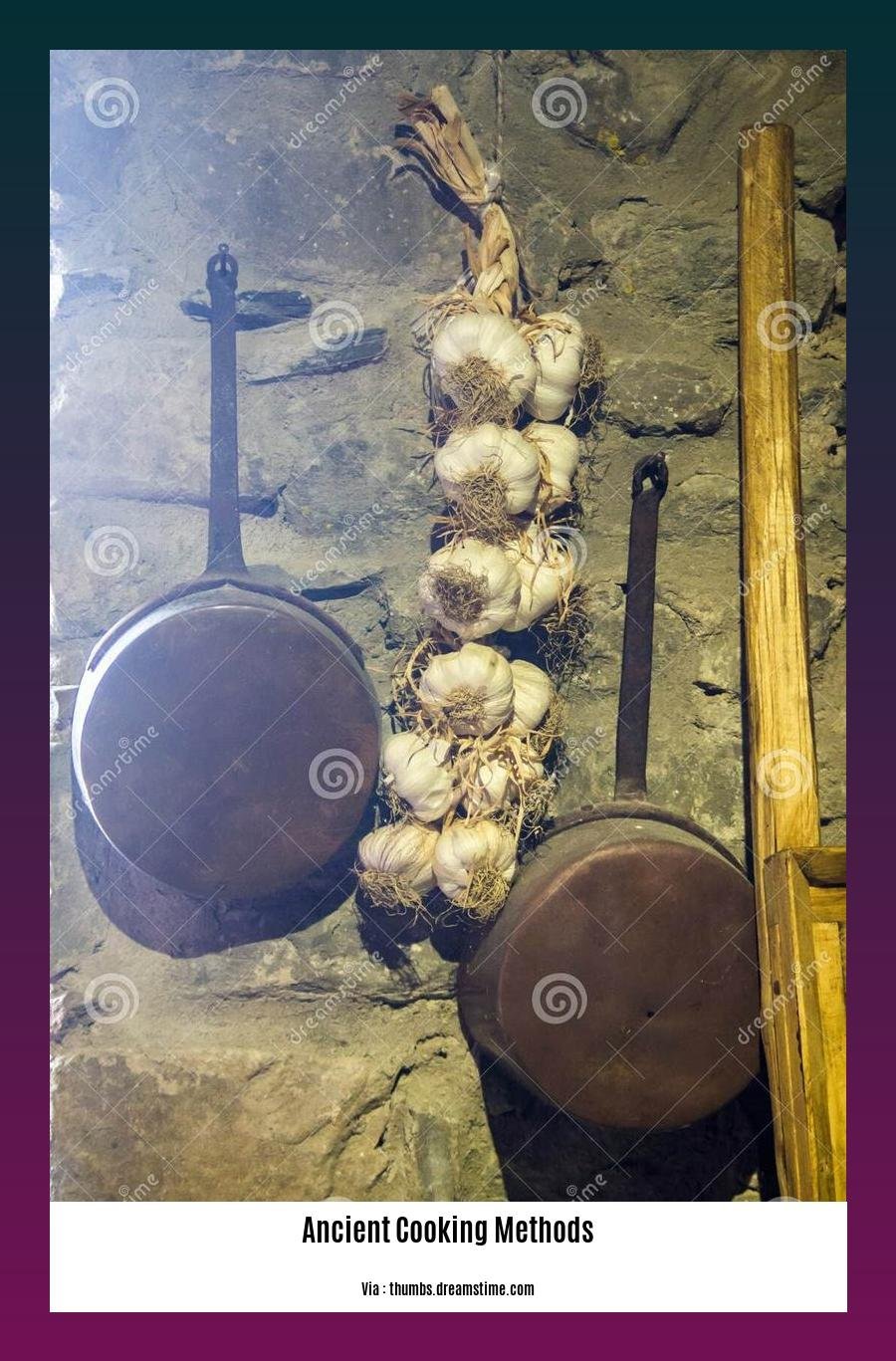
In ancient Rome, cooking was an art form passed down from generation to generation. Roman cuisine was famous for its diverse flavors and sophisticated techniques, many of which are still used today.
Key Takeaways:
Open Fire: Romans commonly used open fires for cooking, providing a smoky and earthy flavor to their dishes.
Troughs of Charcoal: Romans also employed charcoal-filled troughs, enabling efficient cooking and precise temperature control.
Culinary Influence: Roman cooking incorporated culinary traditions from conquered regions, resulting in a rich and diverse cuisine.
Cereals and Legumes: These were the foundation of the Roman diet, providing sustenance and essential nutrients.
Vegetables, Cheese, and Meat: Romans enjoyed a variety of vegetables, along with cheese and meat, which were often seasoned with flavorful herbs.
Sauces and Wine: Sauces were used to enhance the taste of dishes, while wine was a popular and celebratory beverage.
A Culinary Exploration of Ancient Roman Cooking
The culinary landscape of ancient Rome was a vibrant tapestry of flavors and techniques that emerged from the heart of the Mediterranean. Romans were known for their diverse and innovative cooking methods, influenced by their vast empire and access to various ingredients.
The Roman diet was predominantly based on cereals and legumes, such as wheat, barley, and lentils. These staples provided essential nutrients and energy for a population engaged in agriculture, trade, and warfare. Vegetables, including cabbages, turnips, and onions, added color and variety to their meals.
Meat, particularly pork, lamb, and beef, was consumed by the wealthy and the military. Poultry, such as chicken and duck, was also enjoyed. However, these meats were often expensive and reserved for special occasions. Cheese, made from sheep or goat’s milk, was a staple in Roman cuisine, adding a rich, salty flavor to dishes.
Sauces played a crucial role in Roman cooking. Garum, a fermented fish sauce, was a ubiquitous condiment, adding a savory and umami flavor. Other sauces included honey, vinegar, and oil-based dressings, which enhanced the taste of vegetables, meats, and fish.
Wine was an integral part of Roman culture and cuisine. The Romans produced a wide variety of wines, ranging from light and fruity to robust and full-bodied. Wine was consumed during meals, as well as during social gatherings and religious festivals.
Overall, ancient Roman cuisine reflected the empire’s vastness and cultural diversity. From simple peasant fare to elaborate banquets, Roman cooking showcased the ingenuity and sophistication of a civilization that left an indelible mark on culinary history.
Sources:
FAQ
Q1: What were some common ancient Greek cooking tools?
A1: In ancient Greece, cooks utilized various tools to prepare their meals. These included pots made of clay or bronze, often featuring intricate designs, as well as pans, skillets, and griddles for preparing a variety of dishes. Mortars and pestles were used to grind spices and ingredients, while knives of various shapes served for cutting and slicing.
Q2: Can you describe some ancient Roman cooking methods?
A2: Ancient Romans employed several cooking methods to create their cuisine. A common technique was boiling, achieved using large pots placed over open fires or charcoal-fueled stoves. They also utilized earthenware vessels for stewing and baking, while roasting was done in specialized ovens. Additionally, grilling and frying were also practiced, with specialized tools such as grills and frying pans being employed.
Q3: What were some of the unique cooking methods used in ancient India?
A3: Ancient Indian cuisine employed various cooking techniques that reflected its diverse cultural and regional influences. Steaming was widely used, with foods cooked in specialized vessels placed over boiling water. Additionally, tandoors, cylindrical clay ovens, were utilized for baking bread and roasting meats. Another unique method was the use of natural geothermal heat, observed in Iceland, where rye bread was cooked by burying the dough mixture near hot springs.
Q4: How did ancient cooking methods differ from modern techniques?
A4: Ancient cooking methods differed from modern techniques in several ways. Firstly, the primary source of heat was often open fires or charcoal, unlike modern gas or electric stoves. Cooking tools were also distinct, with ancient civilizations relying on handmade pots, pans, and utensils made of clay, bronze, or iron, rather than the stainless steel or non-stick cookware commonly used today. Additionally, the lack of refrigeration and preservation techniques influenced the types of dishes and ingredients available in ancient times.
Q5: What are some examples of ancient recipes that have survived to this day?
A5: Several ancient recipes have survived through historical texts and archaeological findings, providing insights into the culinary practices of past civilizations. One notable example is the Roman cookbook “Apicius”, which contains a collection of recipes from the 1st century AD. Another example is the ancient Indian text “Manasollasa”, which includes detailed descriptions of various dishes and culinary techniques from the 12th century. These recipes offer a glimpse into the flavors and ingredients enjoyed by people in ancient times and continue to inspire modern culinary creations.
